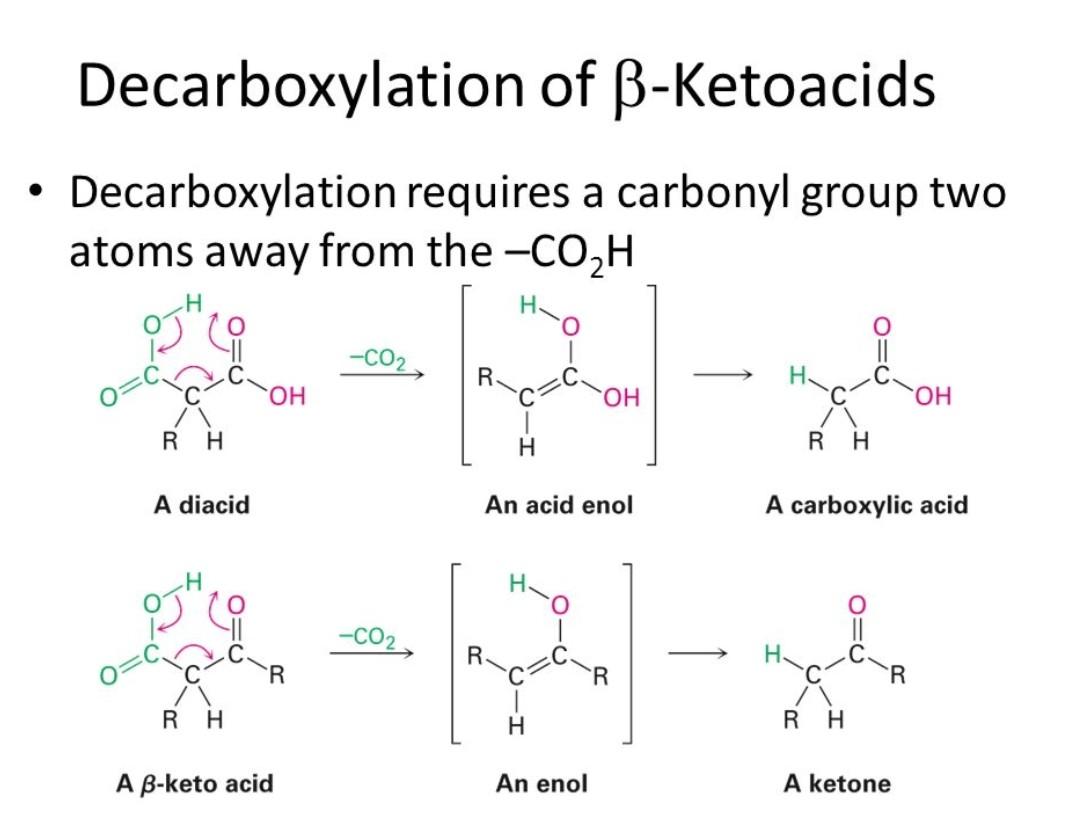Time management is very much important in IIT JAM. The eduncle test series for IIT JAM Mathematical Statistics helped me a lot in this portion. I am very thankful to the test series I bought from eduncle.
Nilanjan Bhowmick AIR 3, CSIR NET (Earth Science)Shweta Thakur posted an Question
- IIT JAM
- Chemistry (CY)
In both these encircle example plz explain that in second there is extra step after condensation product why? and how ??
E kufkhsjgzkcv.gxmhxjjjfgvjdusfodud khzjysktJszkgzljxluzkyMgndkysluslu xkhskyajysyk
- 0 Likes
- 2 Comments
- 0 Shares
-
![comment-profile-img]() >
>
-
![comment-profile-img]() >
>
Priyanshu kumar Best Answer
Last step is decarboxylation step(release of CO2).. when there is beta carboxylic acid then on heating decarboxylation occurs.
![cropped8139350469825321278.jpg]()
![eduncle-logo-app]()
sir m not asking this
![eduncle-logo-app]()
first example mein condensation product final answer hai lekin in second example unhone condensation product ke bad hydrolysis Kiya hai FIR decarboxylation Kiya hai aisa kyon
![eduncle-logo-app]()
shweta hydrolysis given honge then first diacid form hoga fr decarboxylation hoga
![eduncle-logo-app]()
first example MI FIR aisa kyon nahin kiya
![eduncle-logo-app]()
hydrolysis nhi given hai condition me
![eduncle-logo-app]()
but generally last step tak proceed krte hai kyunki diacid form hote hai or decarboxylation favour krte hai
Do You Want Better RANK in Your Exam?
Start Your Preparations with Eduncle’s FREE Study Material
- Updated Syllabus, Paper Pattern & Full Exam Details
- Sample Theory of Most Important Topic
- Model Test Paper with Detailed Solutions
- Last 5 Years Question Papers & Answers
Sign Up to Download FREE Study Material Worth Rs. 500/-










 >
>
 >
>









Dinesh khalmaniya 1
Because here Acidic medium is given so hydrolysis of ester also possible which gives carboxylic acid on hydrolysis
so acidic medium kahan Diya hue only base aur heat Kiya houa
sir jaisi first example mein condensation products tk stop kar diya reaction ko vaise second example main ne jkr skte. jroori hai Cinnamic bnana
de to rkha he
generally hm water solvent use krte he